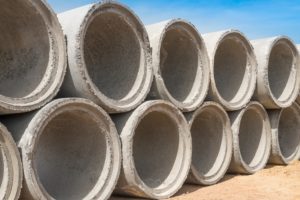
Are you planning to install a new septic tank or replace an existing one that has reached the end of its lifespan? Either way, you have the option to install a plastic or concrete tank. Each material has its pros and cons, so weigh them carefully to help you make the right decision.
Plastic Septic Tanks
Plastic tanks are the modern alternative to concrete. They come in an oblong shape with ridged outer walls. Plastic tanks are premade and ready to install once they arrive at your house.
Pros of Plastic Septic Tanks
- Ease of installation: Being made of plastic makes these tanks relatively lightweight. Since they only weigh a few hundred pounds, they can easily be transported on a regular truck. Installation is as simple as digging a hole, positioning the tank, and connecting it to your plumbing system.
- Affordability: Plastic tanks are usually cheaper than concrete versions. Plus, the lighter weight makes all costs associated with transporting and installing the tank more affordable as well.
Cons of Plastic Septic Tanks
- Lower strength: Even though plastic tanks are built with longevity in mind, their relatively low strength makes them more susceptible to soil vibrations, root penetration, and crushing from heavy surface traffic.
- Lower effluent levels: Septic tanks require the right balance of sludge (solids), scum (lightweight solids), and effluent (liquid). The lightweight nature of plastic tanks means they are unable to handle as much effluent.
- Higher maintenance: The lower effluent capacity requires plastic septic tanks to be pumped and cleaned more frequently. This is an important factor when considering lifetime costs.
Concrete Septic Tanks
Concrete is the traditional septic tank material. You can have a pre-cast tank delivered to your home or pour the tank in place on-site.
Pros of Concrete Septic Tanks
- Durability: Concrete is a much stronger material than plastic, making it better equipped to withstand environmental factors and heavy vehicle traffic.
- Higher effluent levels and lower maintenance: Thanks to their greater weight, concrete tanks can handle a high amount of effluent. This means you can go longer between inspections without issue.
Cons of Concrete Septic Tanks
- Higher cost and more complex installation: The biggest drawback of a concrete tank is how cumbersome it is. With a weight of several tons, a pre-cast tank requires heavy machinery to transport, lift, and lower it into position. On-site pouring is also more complicated than installing a plastic tank.
- More challenging to repair: While they are less likely to be damaged, concrete tanks are more difficult to fix than plastic tanks if they crack.
If you’re still not sure what type of septic tank is right for you, Trinity Liquid Waste can help. Our waste management experts have 25 years of experience performing septic tank services. We’re happy to discuss your options and assist you in making the best selection. Give us a call at 510-874-6489 or contact us online to speak with a septic tank specialist today.
